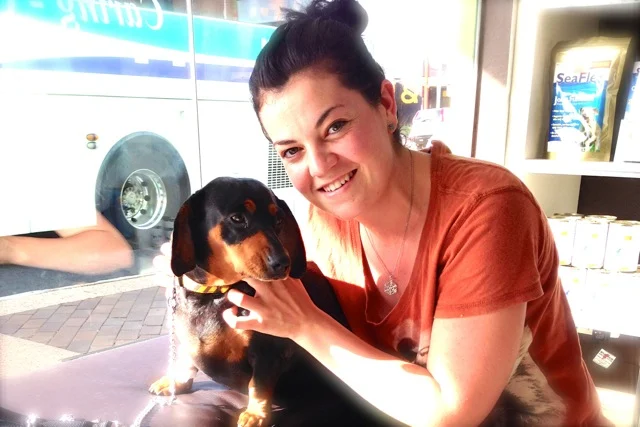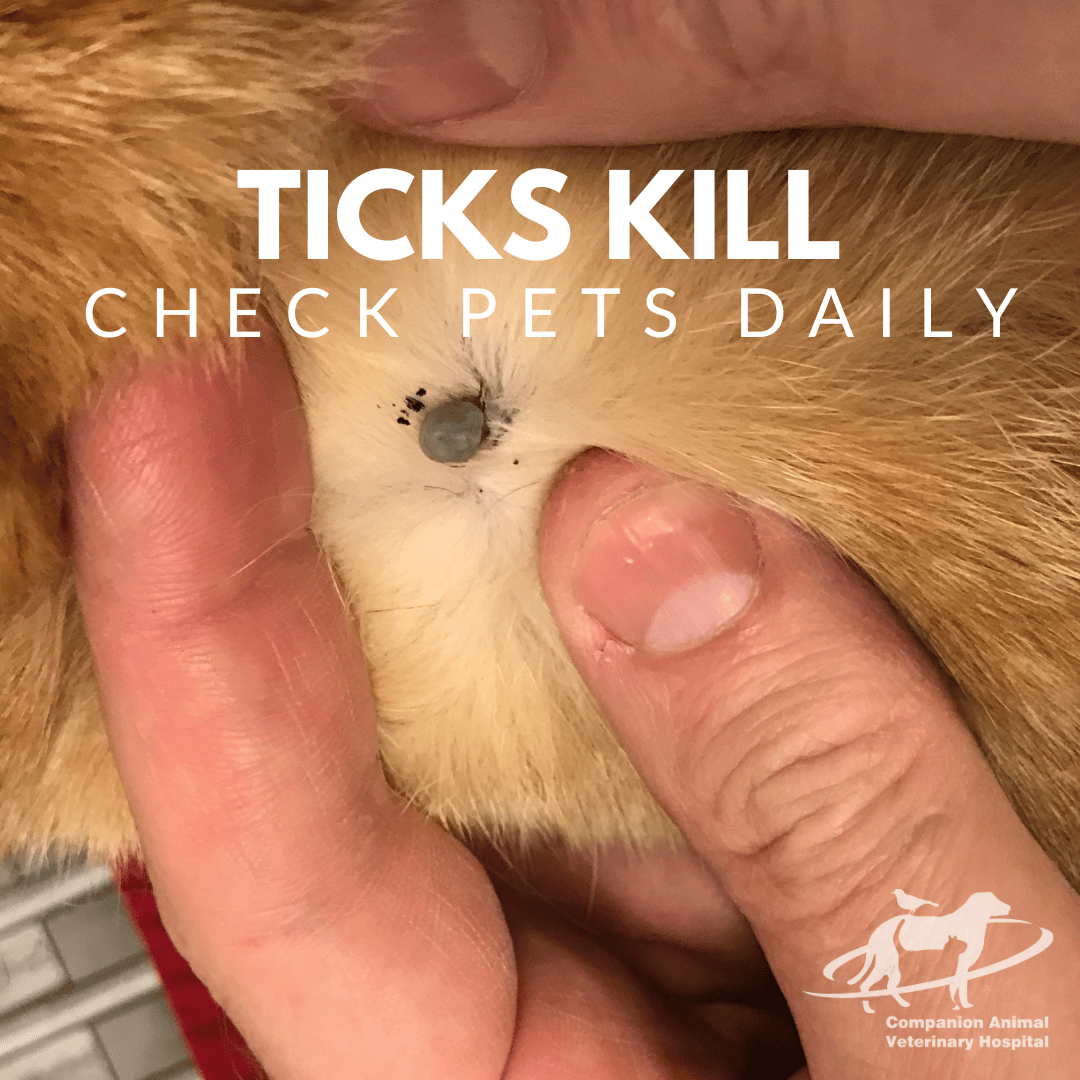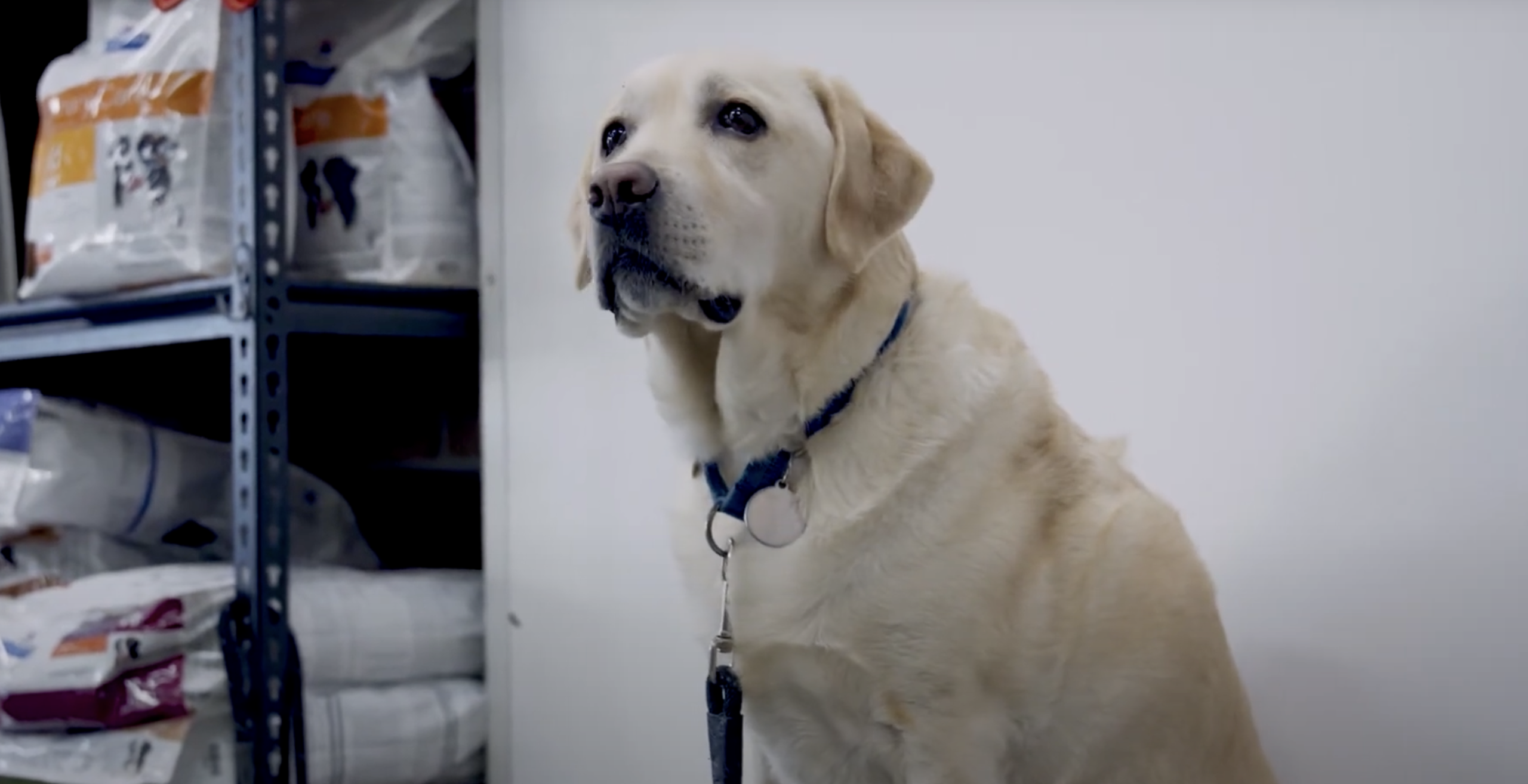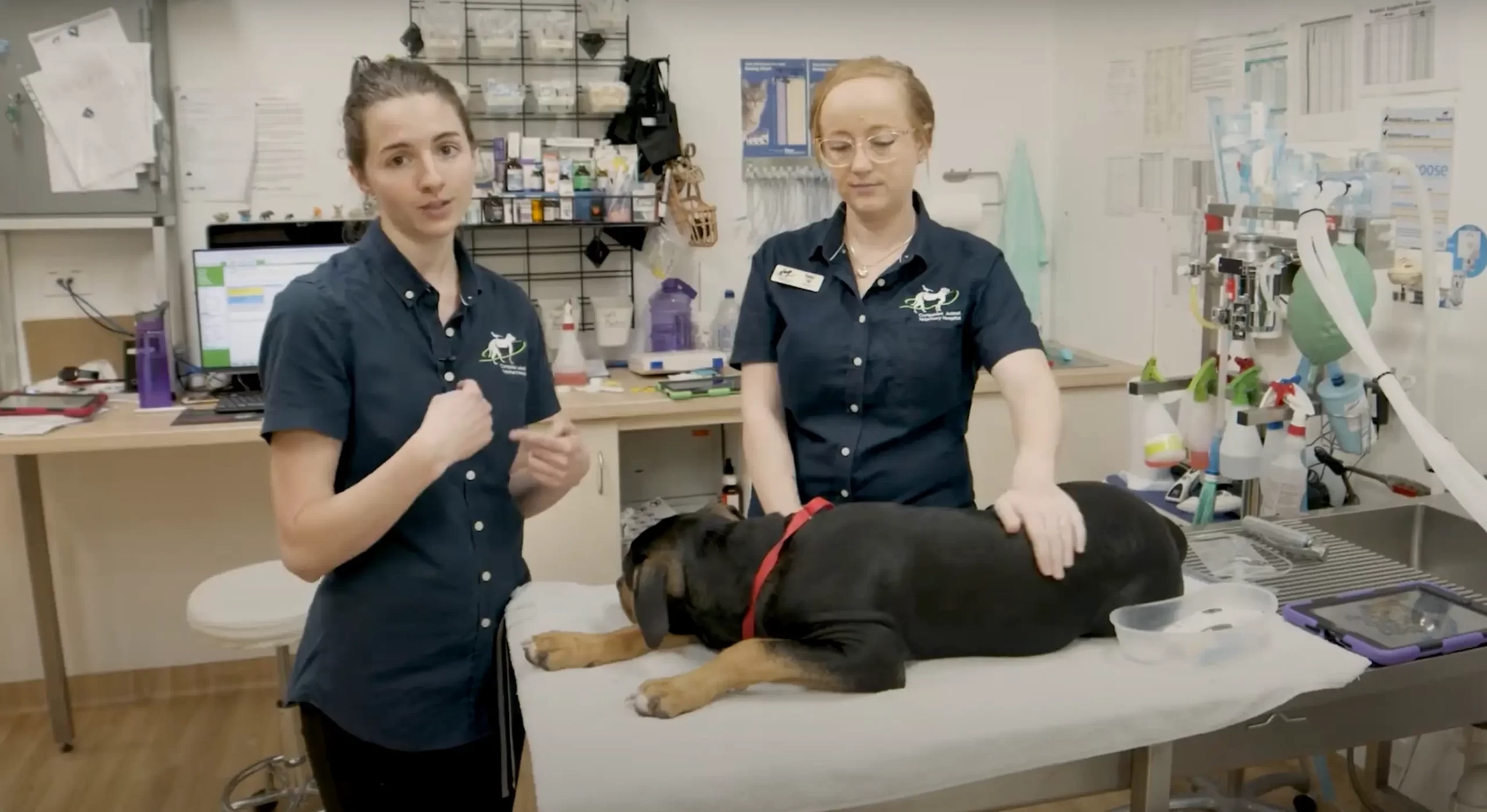Leaking urine (urinary incontinence)
Leaking urine while asleep (urinary incontinence) is a very common problem in dogs and there can be a number of causes. Lilly came to use last November because she was having this issue. We did some investigation, fixed her issue and solved the problem, but we also solved another problem as well.
When Lilly came to us she had been leaking urine while sleeping but also had some blood in her urine the the last few days. Unfortunately Lilly was not the most co-operative of dogs and as she seemed to be painful in her bladder area we decided to anaesthetise her so we could do some urine tests, and xray her bladder.
Investigation
Once we had her anaesthetised we could feel some scrunching in the her bladder. We took an xray and this is what we saw:
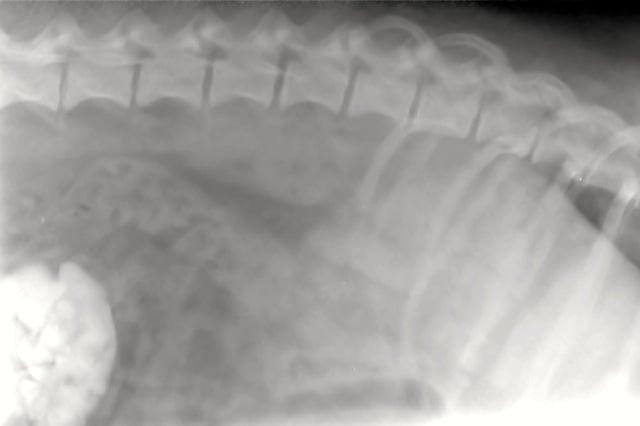
That bright white area on the lower left corner of the image is Lilly’s bladder and it is full of stones.
What are bladder stones?
Bladder stones (uroliths) are caused by salt crystals forming in the urine which clump together over time to form a stone. They are very hard and also very painful for the dog. Depending on the type of stone, the size and the condition of the dog some can be desolved medically. Because Lilly was so sore and there were so many stones we decided to remove her stones surgically. This also allows us to get an analysis done on the stone which then allows us to determine what we can do to stop them forming again.
Here are the stones just after they were removed from Lilly’s bladder:
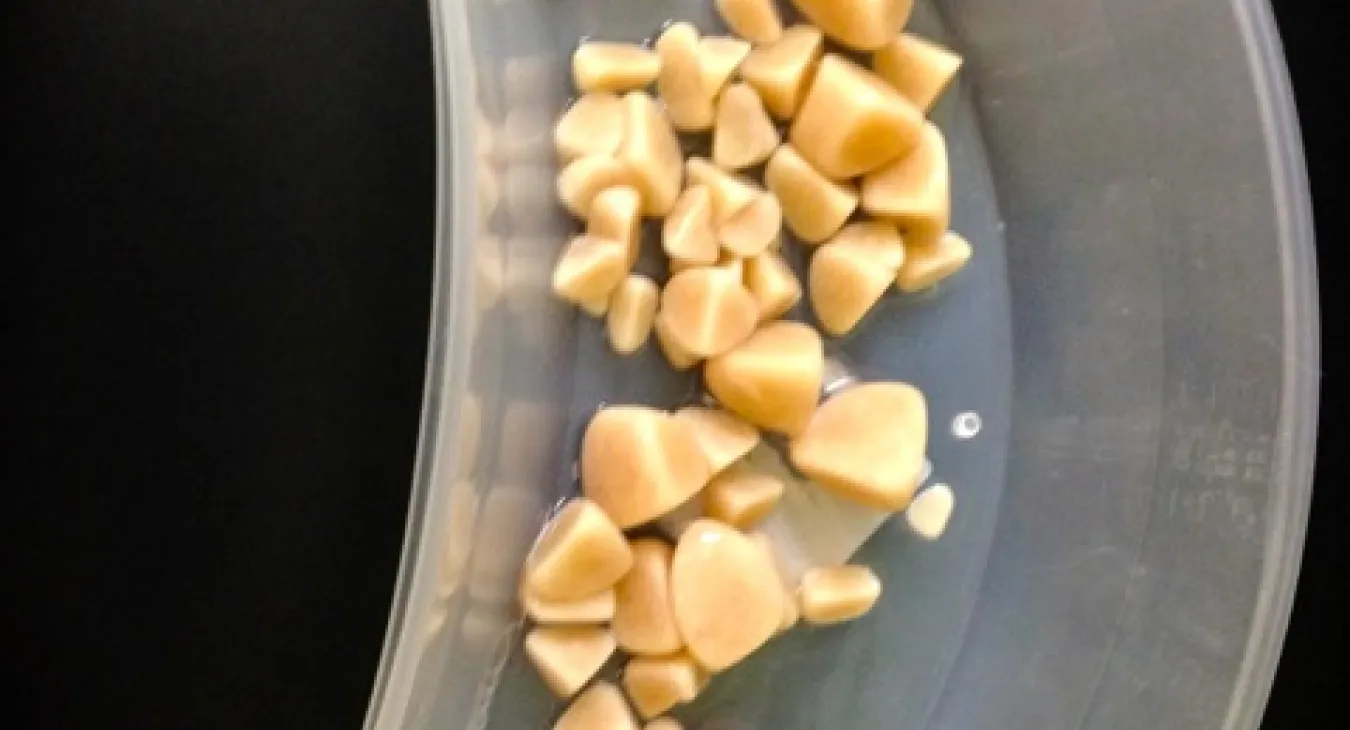
Outcome
Lilly’s stones turned out to be struvite stones. Struvite (a mineral) is formed when the urine pH is too high. Generally what happens is:
- a urinary tract infection develops
- the bacteria produce substances that make the urine pH rise
- struvite crystals form
- struvite stones develop and become a nidus for infection. (the bacteria can survive on the stones themselves)
Lilly was treated with a long course of antibiotics and a special diet (Royal canin Urinary S/O) which helps to prevent struvite formation and lowers the urine pH. Once the infection clears there is no need to continue on the special diet but she will need to be monitored regularly for urinary tract infections.
All of Lilly’s problems relating to her urinary tract resolved (urinary incontinence, straining to urinate, blood in her urine and urinating inside). As a bonus she is now a much happier dog and nowhere near as cranky as what she was before! While having stones is painful dogs with them often do not show any sign of a problem until the stones are quite large. Because it creeps up, their pain is not obvious and it is often not until the stones are removed that you can see just how much pain they have been in.
I wouldn’t say that I am now Lilly’s best friend but her owner Jess (that’s them in the photo at the top of the page) tells me she has been much less temperamental at home and I am so glad I was able to help her out.
